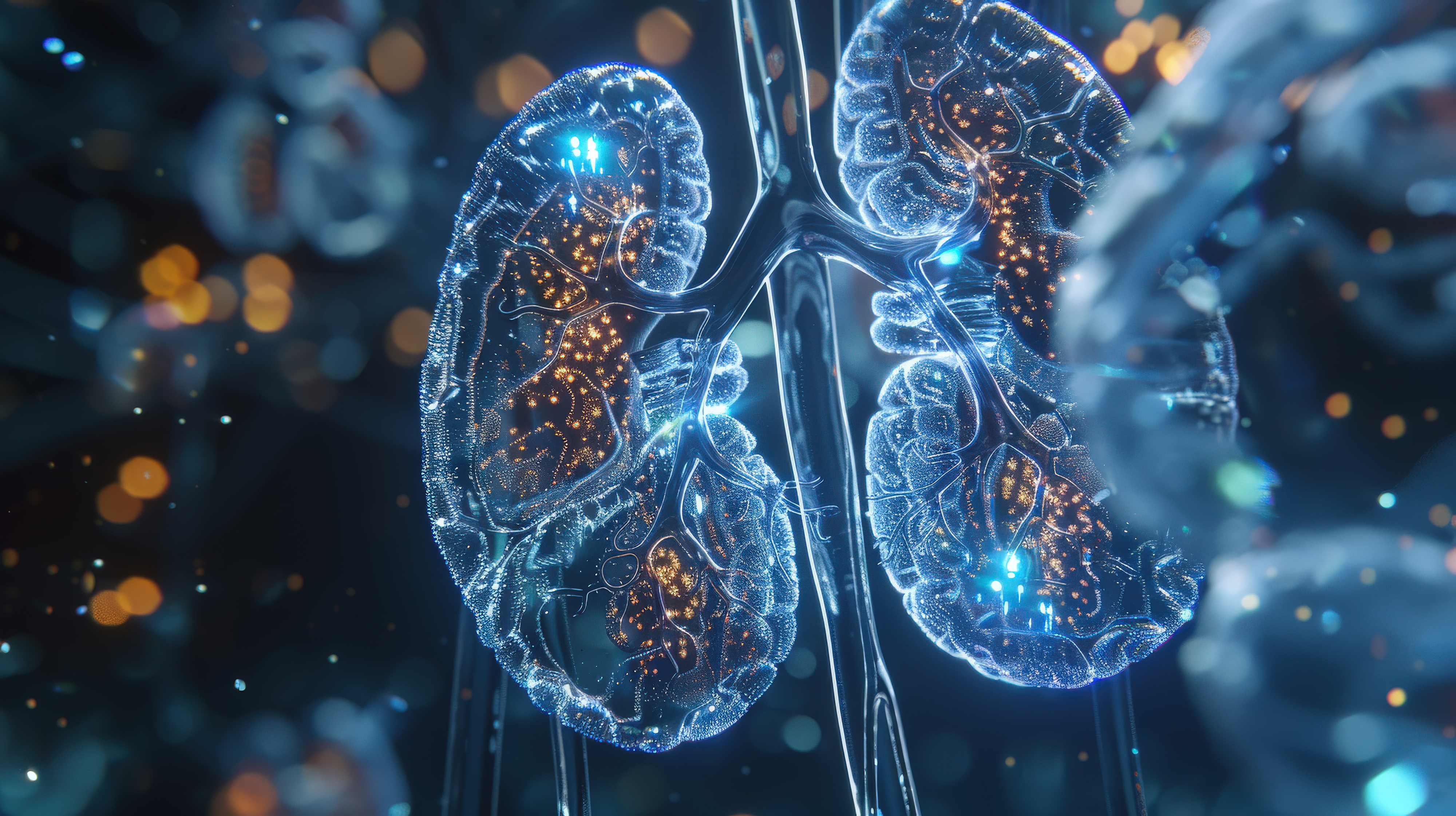New classes of drugs slow the march of kidney disease and improve cardiovascular health,
delaying the need for dialysis and offering patients a better quality of life.
Issue 5 | June 2024

 Subscribe and ensure you don't miss the next issue!
Subscribe and ensure you don't miss the next issue!
Chronic kidney disease (CKD) is a mounting global health concern, affecting about one in 10 individuals. The picture in Singapore is grimmer. The National Population Health Survey 2022 revealed that 14% of Singaporeans are grappling with CKD—an increase from 9% two years prior. Projections suggest that by 2035, one in four residents will likely suffer from this debilitating condition, meaning nearly a million individuals will face significant health challenges.
Help is on the horizon for those facing CKD. New drug treatments and evolving care strategies are carving out alternative pathways that not only slow disease progression and prevent kidney failure, but offer more human choices for managing end-stage conditions.
Advancements in kidney disease management
CKD manifests in five stages, from earlier stages where kidneys function nearly normally but are stressed with excessive protein leakage in urine, to the critical phase of end-stage renal disease or kidney failure. At this stage, the kidneys lose their ability to function, resulting in the accumulation of waste products and fluid in the body.
In Singapore, kidney failure affects the city’s population significantly and is on the rise. “Data suggests that CKD is more prevalent due to an ageing population with more cardiovascular disease who are vulnerable to the former,” says Adj A/Prof Chua Horng Ruey, Head & Senior Consultant, Division of Nephrology, Department of Medicine, NUH. “Underlying factors such as diabetes, hypertension, heart disease, stroke, foot infections, and lifestyle factors play significant roles in increasing the incidence of kidney failure in patients.”
The good news is, the disease has become more manageable with the advent of new drugs such as sodium-glucose co-transporter-2 (SGLT2) inhibitors. Initially developed for diabetes management, these drugs have been repurposed due to their efficacy in slowing kidney disease progression—even for those without diabetes. In November 2023, SGLT2 inhibitors were added to the standard drug list, becoming subsidised and more accessible to patients. This class of drugs has been shown to slow the wheels of kidney disease by 37%, offering patients a brighter prognosis.
Though effective, SGLT2 inhibitors are not a panacea. Lifestyle adjustments remain essential. Dr Chua emphasises the importance of managing blood pressure and diabetes as part of one’s care plan. Some medications targeting high blood pressure, such as angiotensin-converting inhibitors and angiotensin II receptor blockers, can slow CKD progression by 15–20%. Further therapy with mineralocorticoid receptor antagonist (ns-MRA) and glucagon-like peptide-1 receptor agonists (GLP-1RA) in patients with diabetes and kidney disease will also improve the disease outcome in appropriate individuals. Reducing sodium intake, quitting smoking, maintaining a healthy weight and regular exercise are also highly recommended.
Underscoring the role of early detection, Dr Chua advises that “screening for CKD is critical, especially for those at higher risk, such as those with a family history of the disease, or who have diabetes or hypertension.” Early intervention can make a huge difference. For example, SGLT2 inhibitors could significantly increase the functional lifespan of kidneys if treatment starts during the early stages of the disease.
Rethinking dialysis
While dialysis remains a lifeline for many facing kidney failure, it’s not a one-size-fits-all solution. Kidney transplantation is the most preferred option in appropriate patients who are medically suitable. Dialysis on the other hand may not be always beneficial especially the case for older individuals with comorbidities and poor cardiovascular health. “Dialysis may help extend life but does not alleviate all the cumulative chronic health problems or advanced cardiovascular disease, leading to recurrent hospital admissions and a decline in quality of life in their remaining years,” says Dr Chua.
Statistics reveal that the median survival rate for patients undergoing haemodialysis, which involves cleansing the blood outside the body, is only 6.6 years. This includes a range of challenges that can profoundly impact their final years. Therefore, patients with the extreme of chronic health conditions may experience a more limited time and still suffer from various disease complications. Conversely, conservative kidney management—which eschews dialysis—focuses on an optimal control of debilitating symptoms with kidney failure and works towards a better quality of life in the patients’ remaining time.
Conservative kidney management prioritises symptom management and optimising functional well-being without the burdens of regular dialysis sessions hanging over patients’ heads. “It is about enhancing the quality of life rather than merely extending it,” adds Dr Chua. “We aim to provide holistic support that addresses the physical, emotional and psychological needs of patients—so that they can spend their remaining time in comfort and dignity with their loved ones.”
The decision to opt for conservative kidney management over dialysis stems from an understanding that the aggressive nature of dialysis may be more harmful than beneficial for some, especially those with high clinical frailty due to advanced age and worsening health. As awareness grows, more families and patients are exploring this option.
“Patients and their families should be fully informed about the options available, so they can make decisions that align with their values and desired quality of life,” says Dr Chua.
Like this article? Simply subscribe to make sure you don't miss the next issue of EnvisioningHealth!


















